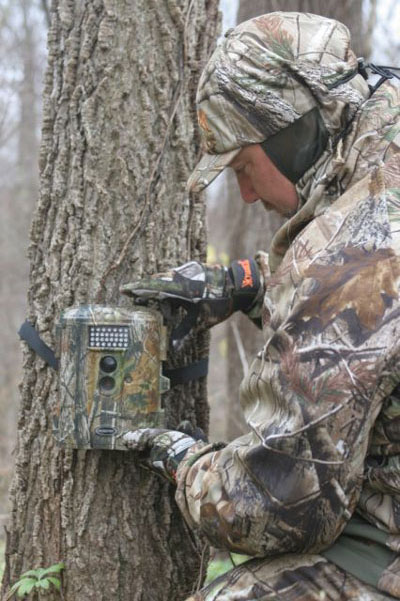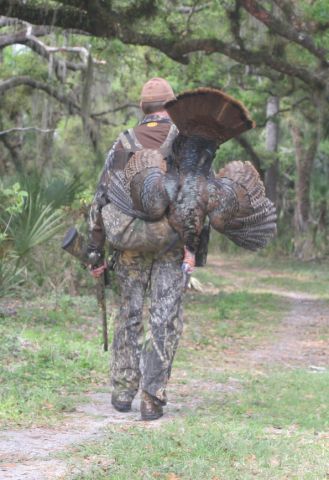
There’s more to game trail cameras than watching deer in the days leading up to opening day and during the season itself. They are a valuable tool that can help you learn about whitetail behavior. Sometimes, they are just plain fun.
Summer Scouting
A remote camera is one of the most beneficial scouting tools in the weeks leading up to opening day. However, setting and checking a deer camera too close to the season can throw bucks off their normal patterns. That’s why smart hunters use them throughout the summer when bucks are on a predictable pattern. Whitetails will enter a field on the same trails day after day if they aren’t spooked. Using a camera throughout the summer can be a great way to see what’s out there, allowing you to fine-tune your trail camera use as the season approaches.
As the season draws near, consider using a Moultrie Game Spy 1-45S Game Camera. It’s a great tool for scouting without disturbing the woods. Instead of going to the camera to recover photos, the Game Spy sends the photos directly to your computer or phone via a wireless network. You might have to move your cameras around a little to pinpoint certain bucks, but the less activity you undertake in your deer woods, the better.
Post-Season Poking
The season might be over and the batteries in your deer camera might be wearing down, but it’s not time to bring it home yet. There’s plenty of work to be done, work that your camera can do for you.
For instance, why not move a wireless game camera to a corner of the farm you didn’t hunt last season? Maybe you didn’t see any deer signs during a pre-season scouting trip, or maybe it just didn’t seem good enough to hold many deer. There’s no better way to find out than by placing a deer cam in spots you don’t hunt. They can reveal secrets about the land you may not notice with your own eyes. For instance, that little block of woods that seemed too small to hunt? That could be where the bucks hang out when they’ve been bumped around most of the season. Hanging trail cams throughout your farm reveals late-season patterns that you can use next year, and they can show you what survived the season.
 Not Just For Deer
Not Just For Deer
Turkey hunters are also discovering the benefits of a wild game camera. Just as deer hunters use them to locate and pattern bucks, spring gobbler hunters can hang a few on trees throughout their hunting areas to find longbeards. Set up a camera in a field, on a logging road, or anywhere else you expect gobblers to strut. A picture of a strutting tom not only tells you where you should sit on opening day, but a photo with a time stamp can pinpoint the exact moment you need to be there. Gobblers are as predictable as a whitetail. A couple of photos over a few days can be all you need to tag a tom.
Even bear hunters have learned the value of a trail camera. There’s no better way to determine a hot bait site than by plugging a memory card into a computer to see what’s visiting the site. Why sit over a bait pile used only by small bears? A trail cam can also tell you when bears are hitting the bait and what time of day they frequent the site.
To Catch a Thief
Tired of trespassers? Hide a remote camera along roads and trails leading into your property to catch poachers and other outlaws in the act. Aside from the liability risk, trespassers can tear up food plots, rut roads, and leave litter. There’s no better evidence than a photo showing a face or a license plate. Law enforcement officers will be more than happy to visit a trespasser with such compelling evidence.
Have Fun
Some hunters set up bait stations during the off-season for the sole purpose of taking pictures of wildlife. Place a few drops of gland lure sold by trapping supply stores in a small hole and set a camera over it. You might catch a fox, bobcat, or coyote, or you might even photograph a critter you’ve never seen before. A few cameras set up over a dead cow might capture all manner of scavengers. Buzzards, coyotes, possums, and even bald eagles might stop long enough to pose for a few pictures, turning your deer camera into a wildlife camera. Plugging your memory card into your computer is as thrilling as opening presents on Christmas morning. Who knows? You might capture a photo of an endangered animal. Heck, you might even snag an up-close shot of Bigfoot.






